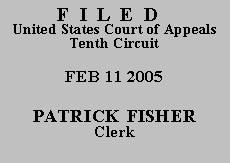

| UNITED STATES OF AMERICA,
v.
RONALD D. LYNCH |
|
David E. O'Meilia, United States Attorney and Shannon L. Henson, Assistant United States Attorney, on the brief, Tulsa Oklahoma, for Plaintiff - Appellant.
Paul D. Brunton, Public Defender, Barry L. Derryberry, Research and Writing Specialist and Robert Ridenour, Assistant Federal Public Defender, on the brief, Tulsa, Oklahoma, for Defendant - Appellee.
The district court held that Blakely v. Washington, 124 S. Ct. 2531 (2004), applied to the federal Sentencing Guidelines and that every factor influencing a defendant's sentence be proven beyond a reasonable doubt or admitted by the defendant. Aplt. App. 63. Accordingly, it imposed a sentence based only upon admitted drug quantity. On appeal, the government argues that Blakely does not apply to the Sentencing Guidelines. Subsequent to briefing, the Supreme Court decided United States v. Booker, 125 S. Ct. 738 (2005), applying its Sixth Amendment holding in Blakely to the federal guidelines. Thus, "[a]ny fact (other than a prior conviction) which is necessary to support a sentence exceeding the maximum authorized by the facts established by a plea of guilty or a jury verdict must be admitted by the defendant or proved to a jury beyond a reasonable doubt." Booker, 125 S. Ct. at 756. The Court rejected the arguments (made here) that Blakely did not apply because the federal guidelines were promulgated by the Sentencing Commission and do not set statutory maximums. Booker, 125 S. Ct. at 752-55.
In the remedial portion of Booker, the Court severed statutory provisions making the guidelines mandatory and prescribing standards of review for guideline sentences. Id. at 764 (severing 18 U.S.C. §§ 3553(b)(1) & 3742(e)) . Though not mandatory, district courts now must consider the guidelines and the sentencing factors identified by Congress in 18 U.S.C. § 3553(a) when imposing sentences. Booker, 125 S. Ct. at 764-65. In turn, the court of appeals will review sentences for reasonableness. Id. at 765-66.
We must apply Booker to this direct appeal and remand for further proceedings. Id. at 769. In Booker's companion case, the district court held that Blakely applied and sentenced the defendant (Ducan Fanfan) to 78 months (given a guideline range of 63-78 months) relying solely on drug quantity found by the trial jury. Booker, 125 S. Ct. at 747. Had the trial judge relied upon facts found by him by a preponderance of the evidence (concerning role in the offense and drug quantity), the guideline range would have been 188-235 months. Id. The government appealed. Although Mr. Fanfan's sentence involved no Sixth Amendment violation, the Court was clear about the remedy: " Nonetheless, the Government (and the defendant should he so choose) may seek resentencing under the system set forth in today's opinions. Hence we vacate the judgment of the District Court and remand the case for further proceedings consistent with this opinion." Id. at 769. In imposing this remedy, the Court specifically rejected defense suggestions that the Sixth Amendment holding be engrafted on the Sentencing Guidelines, or that provisions of the Sentencing Guidelines allowing judicial factfinding be excised. Id. at 768-69.
Accordingly, this case must be remanded to allow the government (and Mr. Lynch should he so choose) to seek resentencing in accordance with the standards announced by the Court in Booker.
REMANDED. All pending motions are denied.
*. After examining the briefs and appellate record, this panel has determined unanimously that oral argument would not materially assist the determination of this appeal. See Fed. R. App. P. 34(a); 10th Cir. R. 34.1 (G). The cause therefore is ordered submitted without oral argument.
1. Under the district court's approach, Mr. Lynch's base offense level was 26, with a two-level adjustment for acceptance of responsibility, resulting in an offense level of 24. See USSG § 2D1.1(c)(7) (50-200 grams of methamphetamine). With a criminal history category of II, the guideline range was 57-71 months. USSG ch. 5, pt. A (sentencing table).
2. The quantities of different drugs produced a marijuana equivalent of 1,834.58 kilograms resulting in a base offense level of 32. USSG § 2D1.1 appl. n. 10; 2D1.1(c)(4) (1000-3000 kilograms of marijuana). With a two-level adjustment for acceptance of responsibility, and a level II criminal history category, the offense level would be 30 and the guideline range would have been 108-135 months. USSG ch. 5, pt. A. (sentencing table).